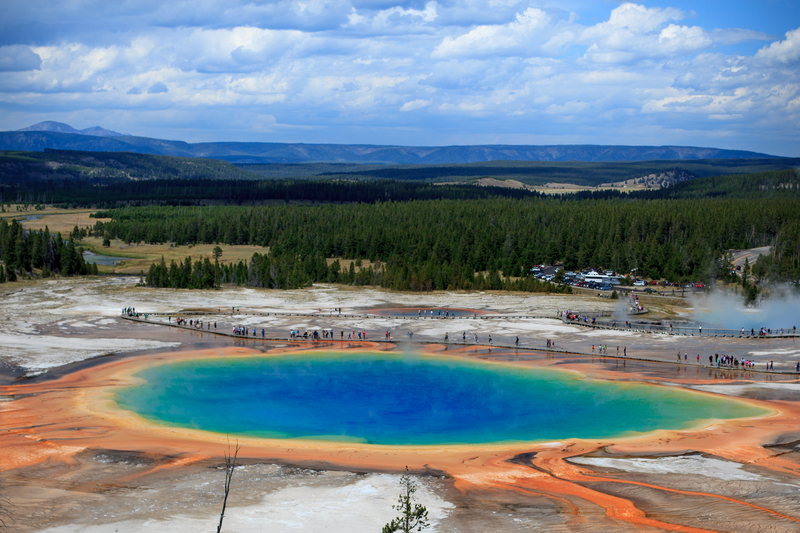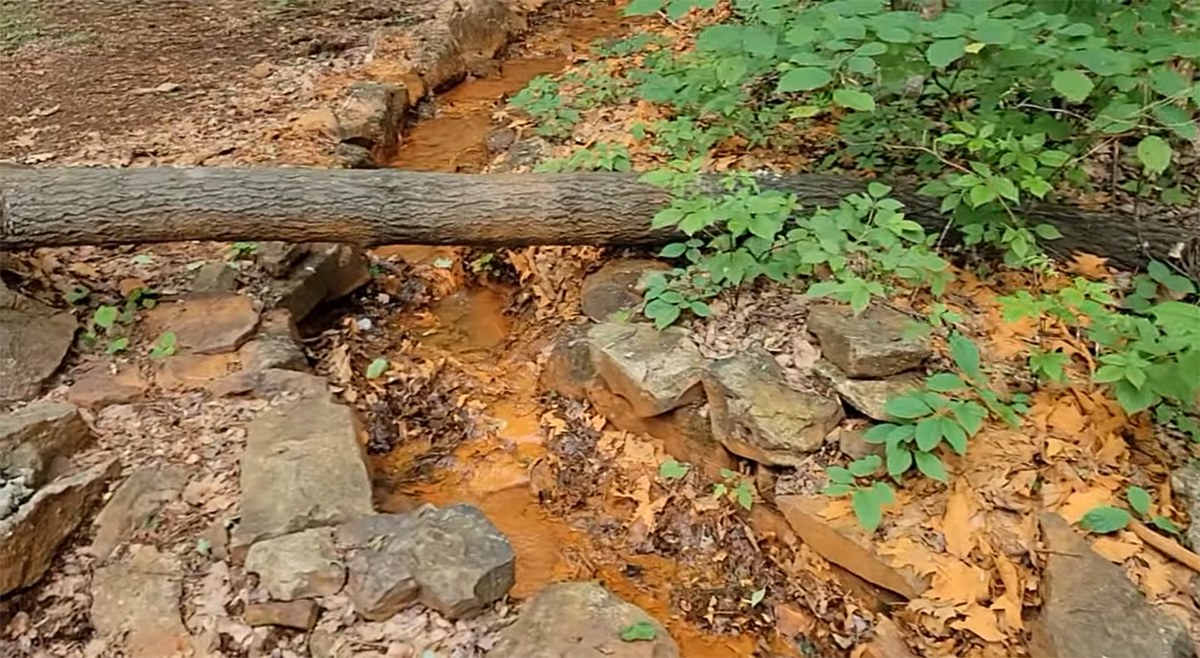Ever been on a hike and encountered unusual colors in a water source? Maybe you crossed a stream that looked a little…radioactive, or like something you’d see in the Great Prismatic Spring in Yellowstone. Is it safe water to drink? Humans have a pretty good sense when something seems off in nature, whether that’s an odor, color or taste, but you might be in a desperate situation where you’re willing to take a little more risk than normal. And sometimes, you don’t want to get to the point where the taste of something is what signals that something’s not right.
At American Outdoor Guide Boundless, we’ve been following the travels of thru-hiker Number 2 Pencil on his quest to complete the Appalachian Trail. In one of his recent videos documenting his journey, Number 2 Pencil told how he came across a questionably orange stream and knew enough not to fill up his bottle, but another person might have been less sure of what to do. Here’s a breakdown of different colors of water you may find out in the backcountry, and what each color means.
If It’s Yellow, Let It Mellow
There are two ways in which color will be imparted in water: suspension or dissolution. One example of something being dissolved in water and changing its color is with tannins, which are caused by organic matter coming from roots, leaves and plant remains. An example of suspension, on the other hand, would be particles of something physically suspended in the water, like sediment or algae. Usually, if left to rest long enough, these particles will settle at the bottom of the water source. Each color you see in water, whether caused by suspension or dissolution, indicates the presence of an element or organic component.
Red. Red water can indicate the presence of iron, algae or dinoflagellates. According to Britannica, dinoflagellates are “any of numerous one-celled aquatic organisms bearing two dissimilar flagella and having characteristics of both plants and animals.” Too much iron in the water can only be harmful to drink for extended periods, but if you’re in an area known to have “red tides,” definitely steer clear. The red tides are caused by harmful algal blooms.
Orange. This color is usually caused by iron but can sometimes indicate acid mine drainage, like that seen in Number 2 Pencil’s video. During the mining process, sulfides are exposed to water and air, where they react to produce sulfuric acid. Don’t take a chance with this color.
Yellow. They call it “yellow boy,” an orange-to-yellow substance that occurs in mine-influenced water when the water rises above a pH of 3 (more neutral). The acid in this water can dissolve arsenic and metals in the surrounding rock and further contaminate the water. Bad news. No drinky.
Green. If the water is a darker green (think pond water), it’s most likely safe to filter. However, if it’s electric blue-green or grass green, that color may indicate harmful cyanobacteria (like those that call places like the Great Prismatic Spring in Yellowstone home). Blue-green can also indicate the presence of copper, which is fine while in nature but not so fine in your house.
Blue. Safe! The deeper blues you see from a distance in lakes usually means the water is uncontaminated by anything that a filter won’t sort out. You may also encounter milky or pale blue, particularly if you’re exploring an alpine region. Bodies of water with this color are called tarns. According to the National Park Service, tarns contain tiny, glacially ground sediment that scatters light and makes the water appear a beautiful icy blue color. This water is also safe to drink, but you may want a heavy-duty filter made specially for glacier water; the sediment will quickly clog a regular filter.
Brown. It may not be the most appetizing color, but brown water is highly common, especially in the woods. The color indicates high tannin levels, stagnation or sediment. Nothing a little purification can’t fix.
Gray. Not like the graywater that comes from your washer or shower. I’m talking about gray water in nature, which typically signifies soil runoff or a higher nutrient content (especially when it’s on a coastline). Filter, drink, continue your hike.
White. This color is usually benign, as it is most often caused by air in the water. If you’re worried, let the water set for a few minutes to make sure the color dissipates.

See where Number 2 Pencil encounters contaminated water at 18:24 in the video: AT Episode 111: Mysterious Water! – YouTube and stick with us at American Outdoor Guide Boundless | America’s Best Outdoor Adventure Magazine for more outdoor tips and adventure coverage.


